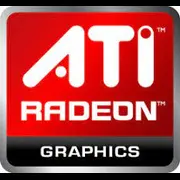ATI Radeon HD 5670 640SP Edition

ATI Radeon HD 5670 640SP Edition: A Retrospective and Practical Use in 2025
An overview of an outdated, yet still interesting graphics card for enthusiasts and specific tasks.
1. Architecture and Key Features
TeraScale 2 Architecture (Evergreen)
The ATI Radeon HD 5670 640SP Edition, released in 2010, is based on the TeraScale 2 architecture (codename Evergreen). This is AMD's second generation of GPUs that introduced support for DirectX 11, a significant step during the transition to new graphics standards. The card is manufactured using a 40nm process, which at the time provided a balance between performance and energy efficiency.
Unique Features (and Their Absence)
The HD 5670 does not support modern technologies such as ray tracing (RTX), DLSS, or FidelityFX. However, it has features that were relevant in the early 2010s:
- Eyefinity — the ability to connect up to three monitors simultaneously.
- UVD 2 — hardware decoding of video formats including H.264.
- DirectX 11 — support for tessellation and enhanced shader modeling.
In 2025, these features may seem archaic, but they could be useful in specific scenarios (e.g., creating multi-monitor office systems).
2. Memory: Modest Metrics for Modern Tasks
GDDR5 and Limited Bandwidth
The HD 5670 640SP is equipped with 512 MB or 1 GB of GDDR5 memory with a 128-bit bus. The bandwidth reaches 64 GB/s — for comparison, modern budget cards like the Radeon RX 6400 (2023) offer up to 128 GB/s. Such memory size and bus width limit performance in games and applications that require high-texture detail.
Impact on Performance
Even in older titles like Skyrim (2011) or Battlefield 3 (2011), the card demonstrates a modest 30-40 FPS on medium settings at 1080p. In modern games, even with low requirements (for example, Fortnite), FPS rarely exceeds 20-25 frames per second.
3. Gaming Performance: A Nostalgia for the Past
FPS Examples in Retro Games
- The Witcher 2 (2011): 25-35 FPS on medium settings (1080p).
- GTA V (2013): 20-30 FPS on low presets.
- CS:GO (2012): 60-70 FPS (though by 2025 the game may be less optimized, leading to drops).
Resolution Support
The card is designed for 1080p, but even there it shows weak results. It is unsuitable for 1440p and 4K resolutions due to a lack of computational power and memory.
Ray Tracing
The lack of hardware support for RT cores makes ray tracing impossible. Software emulation (e.g., through projects like ZomboidPanic RT Mod) reduces FPS to 5-10 frames per second.
4. Professional Tasks: Minimal Suitability
Video Editing and 3D Modeling
For basic editing in Adobe Premiere Pro or DaVinci Resolve, the card can decode H.264, but rendering complex projects will take significantly longer than with modern GPUs. In 3D software (Blender, Maya), it can only handle simple scenes due to support for OpenCL 1.1.
Scientific Calculations
The absence of CUDA (NVIDIA technology) and poor OpenCL support render the HD 5670 unsuitable for machine learning or complex simulations. At best, it can be used for educational projects on older software versions.
5. Power Consumption and Heat Generation
TDP and Cooling Requirements
The card has a TDP of 61W — it does not require additional power and is sufficient with a PCIe x16 slot. The standard cooler is relatively quiet under load, but in compact cases, overheating (up to 75-80°C) is possible.
Case Recommendations
- A minimum case with 1-2 fans for ventilation.
- Avoid installing it in systems with high heat generation (e.g., next to high-end CPUs).
6. Comparison with Competitors
2010s Analogues
- NVIDIA GeForce GT 430: The HD 5670 is 20-30% faster in games.
- AMD Radeon HD 6670: A newer, yet similarly performing option (10-15% difference).
In the Context of 2025
Modern analogues include the Radeon RX 6400 ($100-150) or Intel Arc A310 ($90-120). These cards are 5-7 times more powerful and support current technologies (DLSS, FSR, AV1).
7. Practical Advice
Power Supply
A 300W power supply with an 80+ White certification is sufficient. Example: EVGA 400 W1.
Compatibility with Platforms
- Supported by motherboards with PCIe 2.0/3.0.
- Drivers are available only up to Windows 10. Possible issues in Windows 11.
Driver Nuances
Use the latest version Adrenalin 15.7.1 (2016). For Linux, open-source Mesa drivers are suitable, but functionality is limited.
8. Pros and Cons
Pros:
- Low power consumption.
- Quiet operation.
- Support for three monitors.
Cons:
- Weak performance in modern tasks.
- No support for new APIs (DirectX 12 Ultimate, Vulkan 1.3).
- Limited compatibility with modern software.
9. Final Conclusion: Who is the HD 5670 Suitable for in 2025?
This graphics card is a relic of the past, but it can still find use in the following scenarios:
- Office PCs: For document work and video playback.
- Retro Gaming: Running games from 2005-2013.
- Servers: As a temporary card for diagnostics or display output.
Price: New units are unavailable, but on the secondary market, it can be found for $10-20.
If you're looking for a GPU for modern tasks, consider budget models from 2023-2025. The HD 5670 remains a niche solution for enthusiasts, collectors, and those who value nostalgia.
Basic
Memory Specifications
Theoretical Performance
Miscellaneous
Benchmarks
Compared to Other GPU
Share in social media
Or Link To Us
<a href="https://cputronic.com/gpu/ati-radeon-hd-5670-640sp-edition" target="_blank">ATI Radeon HD 5670 640SP Edition</a>